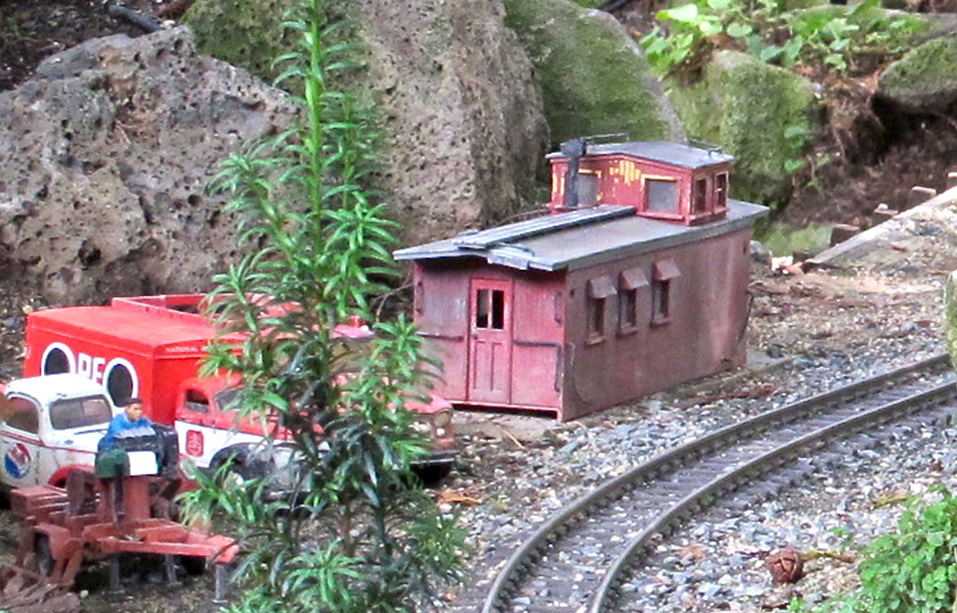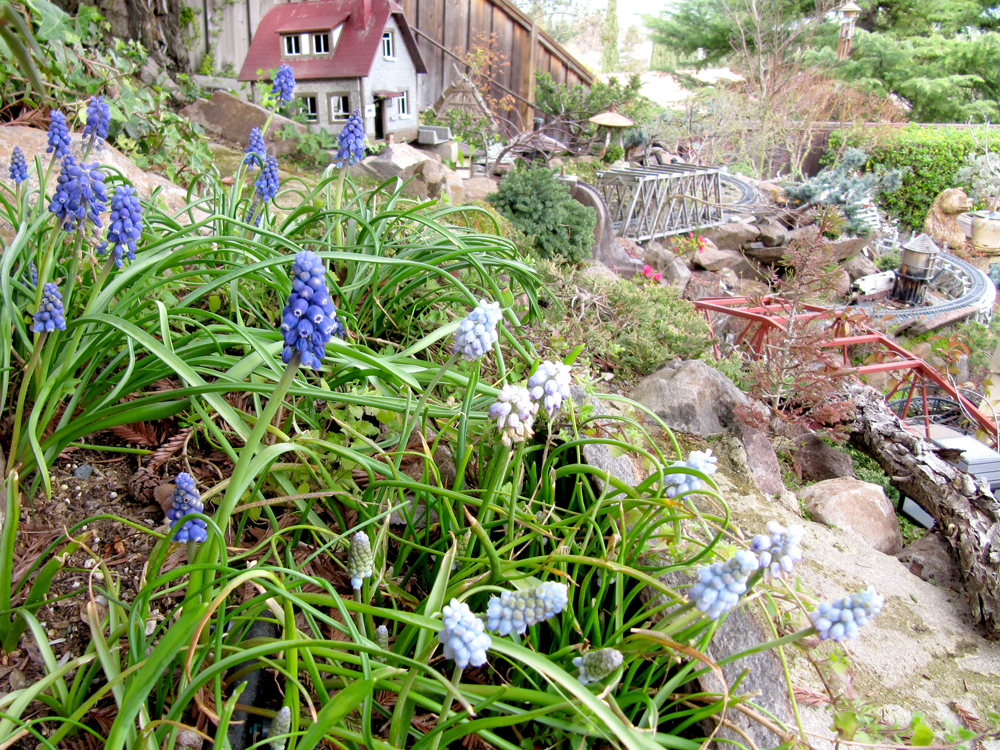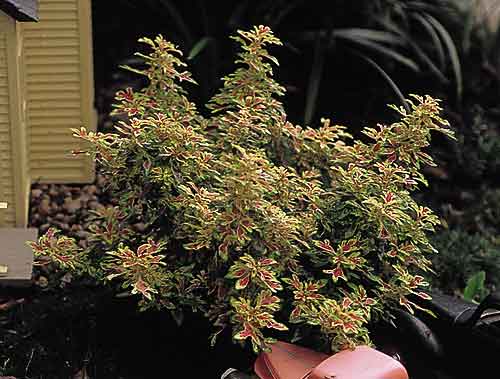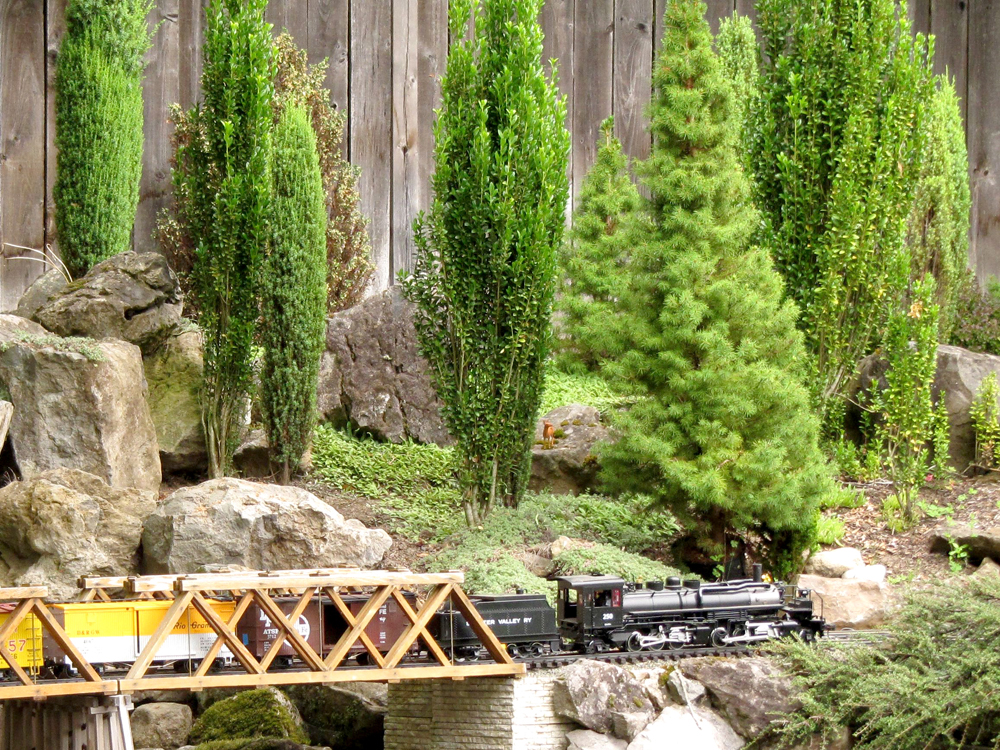Common name: Snow-in-summer, Mouse ear, Silver carpet, Chickweed
Latin name: Cerastium tomentosum
Plant type: Groundcover
Plant size: 6-8″ high by 1-2′ wide; can be invasive
USDA Hardiness Zones: 3-10 (short-lived in Zones 8-10)
Cultural needs: Full sun (light shade in hot Zones), well-drained, moderately rich soil, water well after soil dries somewhat
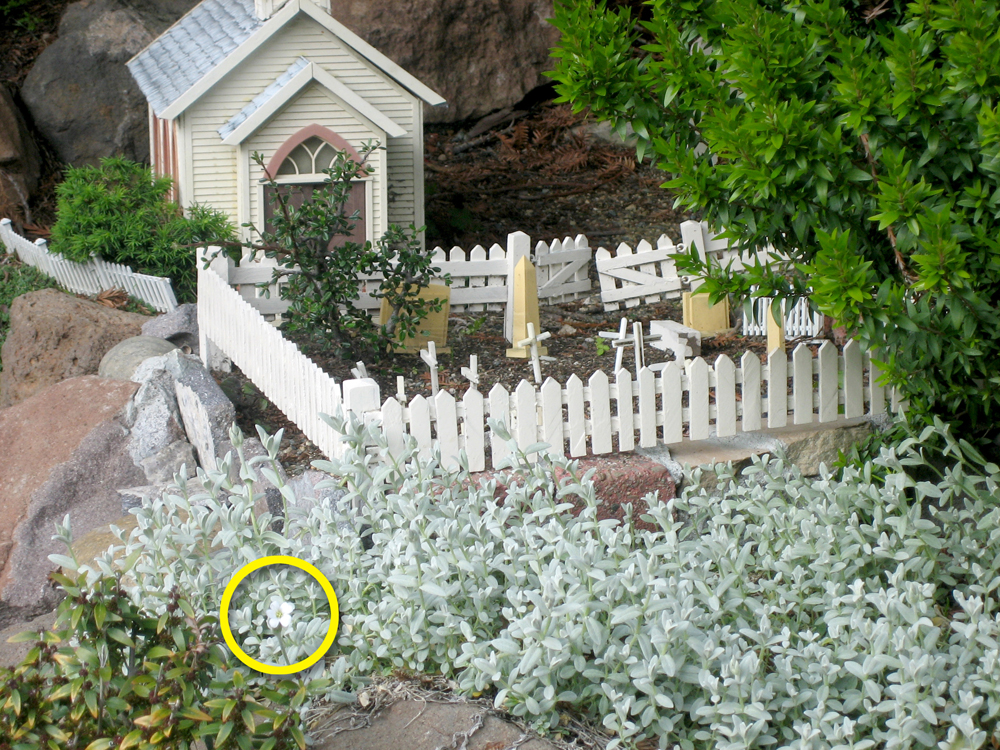
Snow-in-summer is an old fashioned, herbaceous perennial favorite. The “snow” refers to the mounds of small, white flowers covering foliage during late spring. Only one flower (see circle in the photo) in this mid-spring photo hints of the coming blizzard, while showing off its attire the rest of the season. When flowers fade, prune them off, along with a bit of the foliage. Typically we see this plant creeping around rock gardens and coming up everywhere its seeds landed last season. Propagation by dividing the root ball is also easy.
Because it can be invasive, it is best planted next to barriers, like walkways, where it will light up your path with a “silver carpet” of white flowers in late spring, then continue to reflect light with its fuzzy, silvery, “mouse ear” leaves all season. As a bonus, deer will avoid it, and it likes high elevations. It will grow in almost every Hardiness Zone, in most soil types, given good drainage as in its native Italy’s, Mediterranean, xeric conditions. Even after a few frosts, Cerastium tomentosum will linger before finally going dormant for winter.






